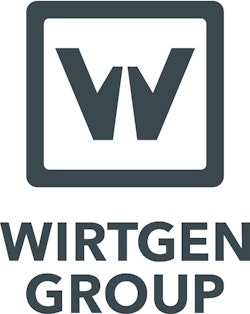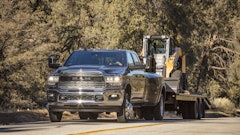

Wirtgen AutoPilot 2.0 is a 3D system designed to use an existing data model or create a new, digital data model at the site to produce all manner of offset and inset profiles. The system is supplied for the models SP 15/SP 15i and SP 25/SP 25i slipform pavers, and can be retrofitted to the machines.
 The Field Rover measures the virtual stringline support points, and the software calculates the optimum course for paving.
The Field Rover measures the virtual stringline support points, and the software calculates the optimum course for paving.
Users can create a virtual stringline on site with the intuitive software on the robust tablet using two different methods. The user can import the data of an existing 3D model onto the tablet, or plot the stretch to be paved with the Wirtgen Field Rover survey pole and define individual measuring points. The software then computes the optimum course on the basis of the measuring points, creating a virtual stringline. Existing objects such as water inlets, hydrants or lampposts can be taken into account and the virtual stringline modified as required.
[VIDEO] Wirtgen Embraces Stringless Technology for Concrete Paving
 With the AutoPilot 2.0, Wirtgen slipform pavers pave monolithic profiles or narrow roadways without stringlines. Even complex profile shapes can be created in a very short time.
With the AutoPilot 2.0, Wirtgen slipform pavers pave monolithic profiles or narrow roadways without stringlines. Even complex profile shapes can be created in a very short time.
After quality testing, the tablet is connected to the machine control of the paver and the created specifications communicated to the machine. The paver then starts on its own at the specified starting point and progresses automatically along the predefined course. Users retain full control and can intervene in the autonomous paving process at any time.





















